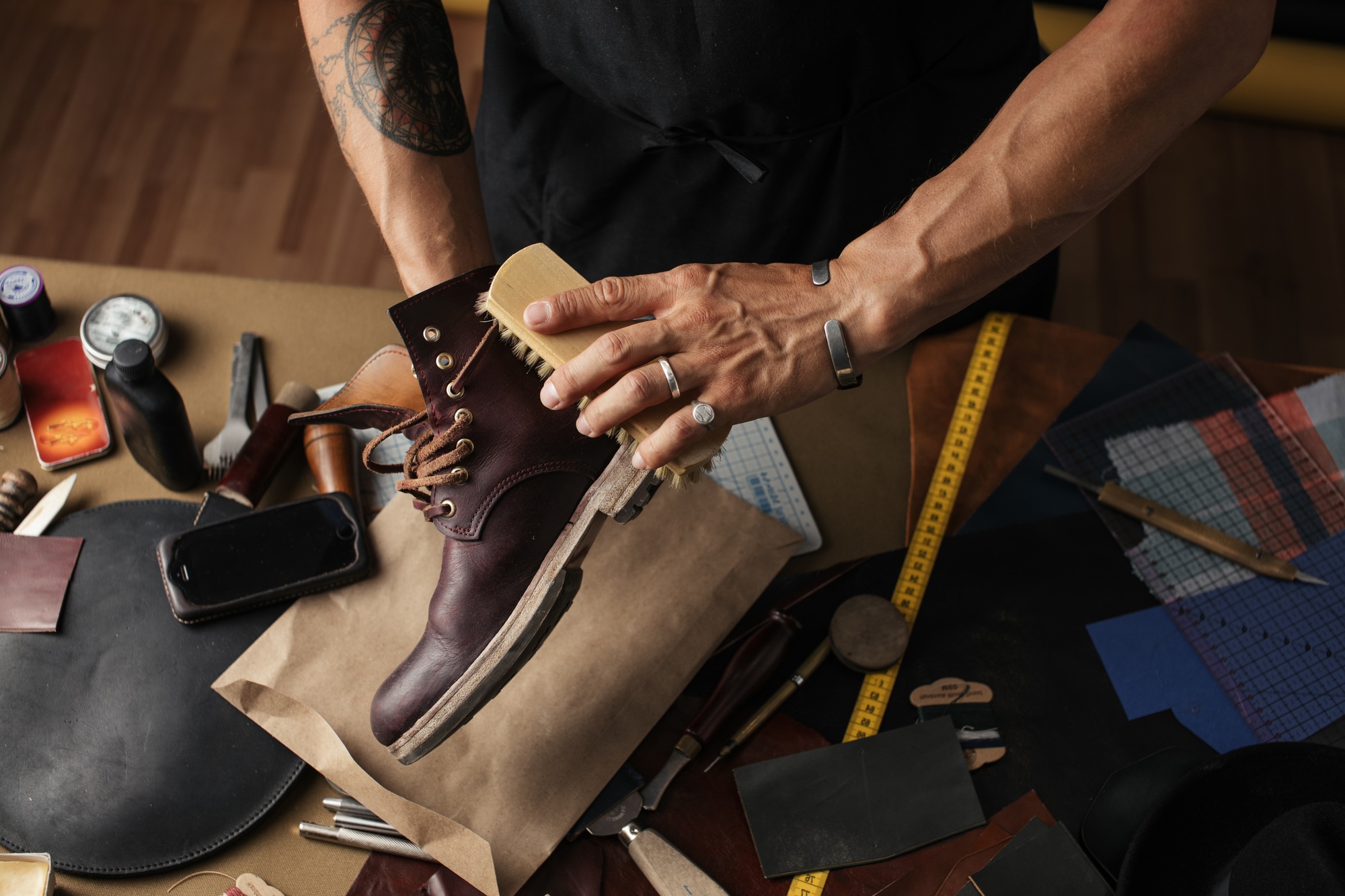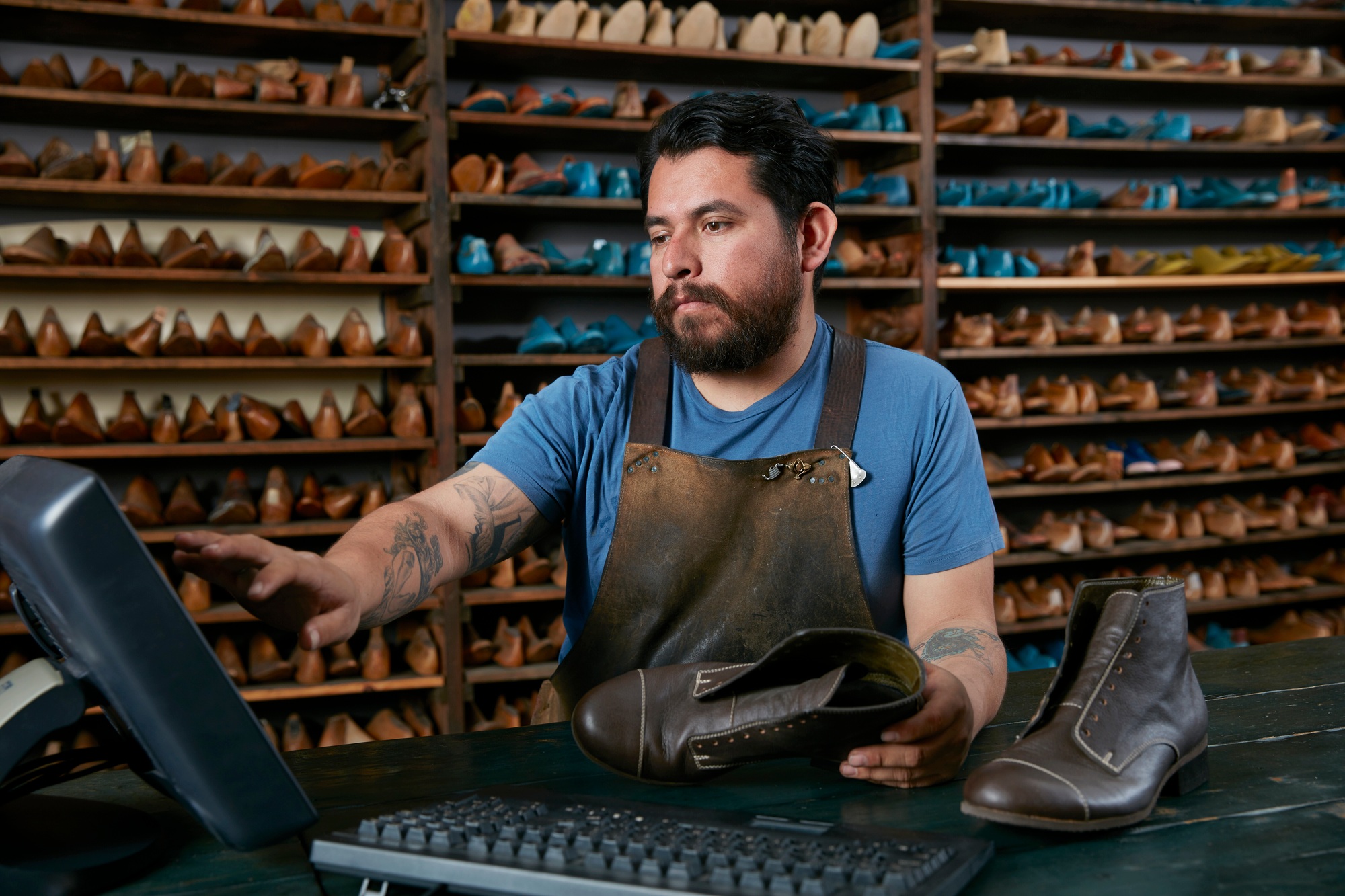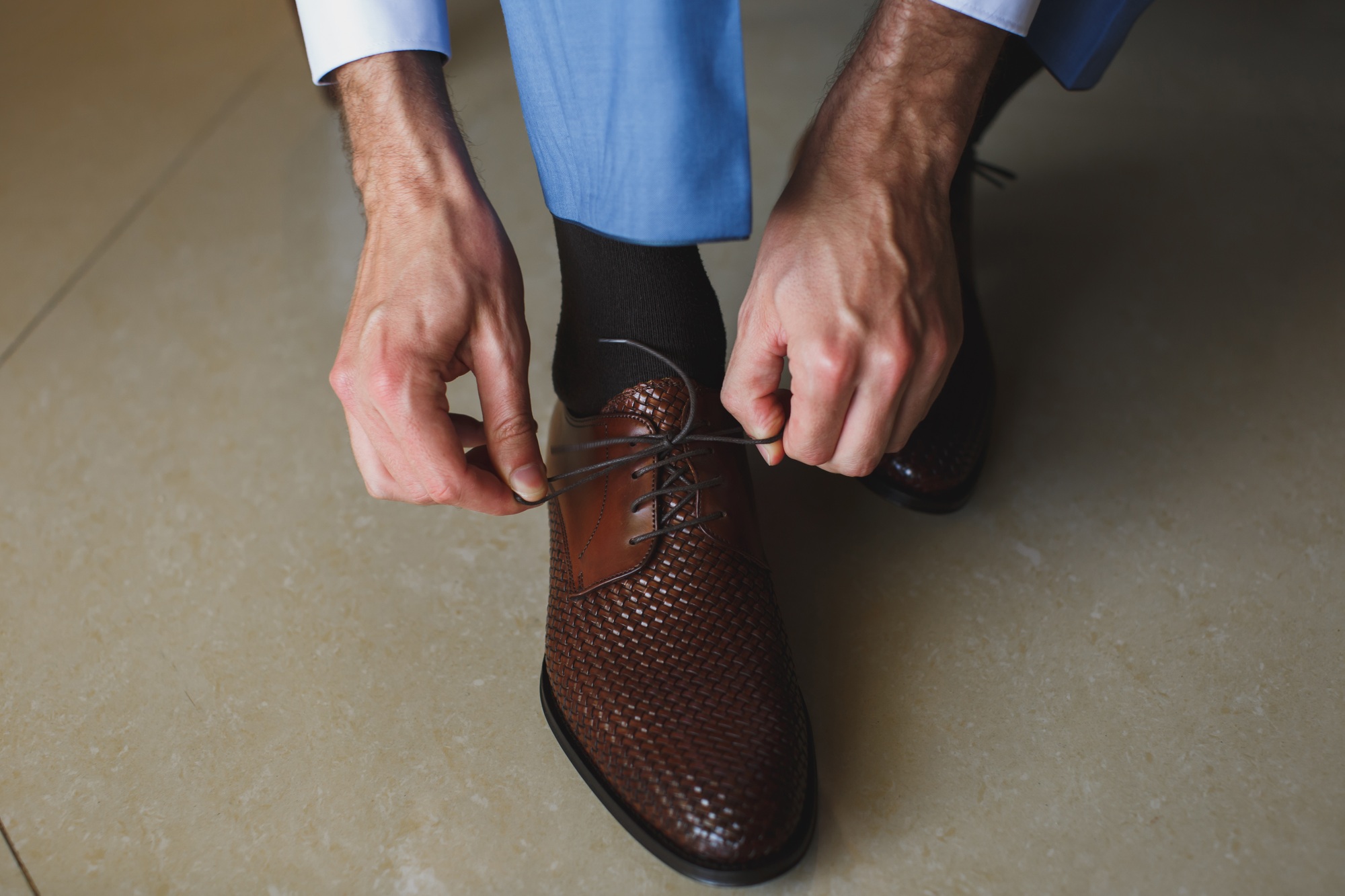Key Takeaways

- Market Research is Essential: Conduct thorough market analysis to understand trends, competitors, and target demographics before launching your shoe business.
- Develop a Comprehensive Business Plan: Outline your business model, financial goals, and marketing strategies to create a roadmap for your shoe business’s success.
- Focus on a Niche: Choose a specific type of footwear that aligns with market demand, such as athletic shoes or sustainable designs, to differentiate your brand.
- Ensure Legal Compliance: Register your business, choose an appropriate structure, and obtain necessary licenses to establish a legal foundation for operations.
- Prioritize Quality in Sourcing: Find reliable suppliers for materials and decide on an effective manufacturing method to guarantee the quality of your products.
- Engage in Effective Marketing: Utilize social media, collaborate with influencers, and implement email marketing campaigns to enhance visibility and attract customers.
Starting a shoe business can be an exciting journey that combines creativity and entrepreneurship. With the global footwear market booming, there’s never been a better time to turn your passion for shoes into a thriving venture. Whether you dream of designing stylish sneakers or crafting elegant heels, the possibilities are endless.
As you embark on this adventure, you’ll need to navigate various aspects, from market research to branding and production. Understanding your target audience and developing a unique selling proposition will set you apart in a competitive landscape. This guide will walk you through the essential steps to launch your shoe business successfully, helping you transform your vision into reality.
How To Start A Shoe Business

Starting a shoe business involves several crucial steps to establish a solid foundation. Follow these steps to ensure a successful launch:
- Conduct Market Research
Analyze competitor brands. Identify trends and target customers. Gather data on pricing and consumer preferences. Use surveys and focus groups for insights.
- Create a Business Plan
Define your business model. Outline product offerings and pricing strategies. Detail marketing and sales strategies. Include financial projections and operational plans.
- Choose a Niche
Focus on specific footwear types. Consider options like athletic shoes, casual footwear, or sustainable designs. Select a niche based on market research findings.
- Register Your Business
Choose a memorable brand name. Secure domain names and social media handles. Register your business with local authorities and obtain necessary licenses.
- Source Materials and Suppliers
Research and connect with reputable suppliers. Evaluate material quality and pricing. Negotiate initial contracts for production needs.
- Design Your Products
Create unique designs that reflect your brand identity. Utilize design software for prototypes. Solicit feedback from potential customers.
- Develop a Marketing Strategy
Choose platforms for promotional efforts. Utilize social media for brand visibility. Implement online and offline advertising campaigns focusing on your target audience.
- Launch Your Online Store
Build an e-commerce website. Ensure user-friendly navigation and secure payment options. Highlight product details and quality images.
- Set Up Inventory Management
Implement a tracking system for inventory levels. Use software to manage stock efficiently. Plan for reorder points based on sales data.
- Focus on Customer Engagement
Initiate customer service protocols for inquiries and feedback. Create loyalty programs to encourage repeat business. Use social media to maintain engagement and community building.
By following these steps, you create a structured approach to building your shoe business. The shoe industry offers ample opportunities for small business growth and innovation, reflecting your passion for footwear design and retail.
Researching The Market

Researching the market forms the foundation of launching your shoe business. Focus on understanding your target audience, analyzing competitors, and identifying trends in the footwear industry.
Understanding Your Target Audience
Understanding your target audience entails recognizing their demographics and preferences. Determine what types of shoes appeal to different consumer segments, such as age, gender, and lifestyle choices. For instance, young athletes may favor athletic footwear, while professionals often seek stylish and comfortable dress shoes. Conduct surveys or interviews with potential customers to gather insights that refine your product offerings.
Analyzing Competitors
Analyzing competitors provides valuable insights into the footwear landscape. Identify key players in your niche and assess their strengths and weaknesses. Examine their pricing strategies, marketing approaches, and customer engagement techniques. This analysis helps you differentiate your shoe brand by spotting areas for improvement or innovation. For example, if competitors lack inclusive sizing options, you could capitalize on this gap.
Identifying Trends In The Footwear Industry
Identifying trends in the footwear industry allows you to stay relevant and competitive. Monitor industry reports and consumer behavior studies to track emerging styles and popular materials. Focus on trends such as sustainable practices or technological advancements in footwear design. Adapting your shoe business to align with relevant trends enhances your brand’s appeal and marketability, making it easier for your small business to attract customers.
Developing A Business Plan

A comprehensive business plan serves as the foundation for your shoe business. Focus on key components to outline your vision and strategy effectively.
Defining Your Business Model
Identify how your shoe business generates revenue. Choose a structure that aligns with your goals, whether it involves selling online, setting up a brick-and-mortar store, or utilizing a hybrid approach. Analyze potential delivery methods, pricing strategies, and customer engagement techniques. Make clear decisions regarding bespoke designs or mass production based on your target audience’s preferences and market trends.
Setting Financial Goals
Establish concrete financial objectives for your shoe business. Outline expected startup costs, including equipment, marketing, and inventory. Project sales targets for the first year, considering market dynamics and growth trends. For accurate forecasting, consider industry averages; for instance, shoes typically have a markup of 100% to 300% depending on materials and design. Create budgets that accommodate operational costs while maintaining flexibility to adapt to unforeseen changes.
Creating A Marketing Strategy
Develop an effective marketing strategy that resonates with your audience. Utilize digital platforms to reach potential customers through social media, email campaigns, and search engine optimization (SEO) techniques. Highlight your unique selling points, such as sustainability or exclusive designs, in advertising materials. Engage with your community through interactive content and events, fostering customer loyalty and brand recognition. Identify your target market and tailor campaigns that speak directly to their interests and behaviors.
Sourcing Materials And Manufacturing

Sourcing quality materials and selecting a reliable manufacturing process play pivotal roles in establishing a successful shoe business. Focusing on these aspects ensures durability and overall product excellence.
Finding Reliable Suppliers
Finding reliable suppliers demands thorough research and relationship building. Identify suppliers providing materials such as leather, fabric, rubber, or synthetics meeting durability and comfort standards. Assess multiple suppliers to compare quality and prices. Building strong relationships enables timely deliveries and better pricing agreements. Regularly review each supplier’s performance and remain open to exploring new options to maintain quality standards.
Choosing The Right Manufacturing Method
Choosing the right manufacturing method involves evaluating different production techniques. Decide between outsourcing manufacturing or producing in-house based on budget and production capacity. Common methods include mass production for high volume and cost-effective solutions or small-batch production for unique and customized offerings. Assess each method’s pros and cons regarding scalability, lead time, and quality control to align with your business goals.
Quality Control Measures
Implementing quality control measures is essential to ensure product consistency and reliability. Establish strict guidelines for assessing material strength and flexibility. Conduct regular tests to evaluate how materials hold color and resist wear. Develop a clear quality assurance protocol throughout the manufacturing process to address issues before products reach consumers. Monitoring quality at each stage enhances brand reputation and customer satisfaction.
Designing Your Shoe Line

Designing your shoe line involves understanding the fundamental aspects of footwear and effectively collaborating with designers to create prototypes.
Understanding Footwear Design Basics
Recognize the essential components of shoe design. Familiarize yourself with parts such as the upper, outsole, insole, and lining, as each contributes to the overall functionality and aesthetic. Master the basic design elements which include shape, color, and texture, ensuring that your designs address a specific need or gap in the market. Invest time in sketching various designs, using either hand-drawing techniques or computer software, to communicate ideas clearly.
Collaborating With Designers
Engage with experienced designers to enhance your shoe line. Establish partnerships with professionals who possess expertise in footwear trends and production processes. Utilize their knowledge to refine your designs, as collaboration often leads to innovative ideas and improved quality. Ensure clear communication of your vision, emphasizing the target audience and brand identity throughout the design process.
Creating Prototypes
Initiate the prototype development phase after finalizing designs. Work closely with manufacturers to create samples that accurately represent your vision and specifications. Evaluate prototypes for comfort, durability, and style, making necessary adjustments before final production. Use feedback from potential customers during testing to fine-tune your designs further, ensuring a product that meets market demands and enhances your brand’s appeal.
Setting Up Your Business Legally

Establishing your shoe business legally requires careful consideration of various elements, including your business structure, name registration, and the necessary licenses and permits.
Choosing A Business Structure
Selecting the right business structure represents a fundamental step in the legal setup of your shoe business. The most common options include:
- Sole Proprietorship: Characterized by simplicity and ease of setup, this structure suits single owners. Personal liability for business debts and obligations exists.
- Limited Liability Company (LLC): This structure provides protection for personal assets and offers flexibility, making it suitable for businesses with multiple owners. Liability protection benefits all members.
- Corporation: Best for larger operations, corporations follow more complex regulations and provide liability protection. Higher initial costs and maintenance requirements accompany this choice.
Registering Your Business Name
Registering your business name is essential for legal recognition. Follow these steps:
- Choose a Unique Name: Ensure that your selected name stands out and accurately represents your brand. Check for existing trademarks to avoid conflicts.
- Conduct a Name Search: Use your state’s business entity search tool to verify that your name choice is available.
- Register Your Name: File the necessary paperwork with your state’s business division. Registration fees typically range from $50 to $200 depending on the state.
- Protect Your Name: Consider trademark registration to safeguard your brand identity and prevent others from using a similar name in the industry.
Understanding Licenses And Permits
Acquiring the correct licenses and permits is crucial for legal compliance. Focus on these key aspects:
- Local Business Licenses: Every municipality requires businesses to obtain specific licenses. Contact your local government office for information tailored to shoe retail.
- Seller’s Permit: This permit allows you to collect sales tax on behalf of the state. Requirements vary by state, so check local regulations for compliance.
- Health and Safety Permits: If your shoe business involves specific manufacturing processes, certain permits may apply. Research local health department regulations to ensure compliance.
- Zoning Requirements: Investigate zoning laws in your area to determine any restrictions related to operating a retail outlet or an online business from your home.
By focusing on these foundational legalities, you create a secure framework for your shoe business, positioning yourself for future growth and success in the competitive market.
Launching Your Shoe Business

Launching a shoe business involves strategic decisions that enhance visibility and attract customers.
Building An Online Presence
Establish a robust online presence through a user-friendly website and social media platforms. Create an e-commerce site that showcases your shoe designs and facilitates seamless transactions. Utilize SEO techniques to optimize your site for search engines. Engage customers through content marketing, sharing blogs about footwear trends or style tips. Leverage social media platforms, such as Instagram and Facebook, to build a community around your brand and share customer testimonials.
Setting Up A Physical Storefront (If Applicable)
Design a physical storefront that reflects your brand identity and showcases your shoe collections effectively. Choose a location with high foot traffic to increase visibility and attract potential customers. Implement eye-catching displays that highlight unique features of your products. Ensure a welcoming atmosphere where customers feel comfortable exploring your offerings. Consider scheduling staff training sessions to enhance customer service skills and product knowledge.
Planning Your Launch Event
Organize a launch event to create excitement and awareness about your new shoe business. Select a date and venue that resonate with your target audience. Develop an engaging agenda that includes product demonstrations, giveaways, and exclusive offers to incentivize attendance. Promote the event through online and offline channels to maximize reach. Network with local influencers to expand your event’s visibility and create buzz around your brand.
Marketing Your Shoe Business

Effective marketing strategies play a pivotal role in establishing a successful shoe business. Implement multifaceted approaches to reach various customer segments and foster brand loyalty.
Utilizing Social Media
Utilize social media platforms to showcase your shoe products. Share pictures of the design process, engage directly with customers, and encourage feedback. Create engaging content such as videos or polls to enhance interaction. Register your brand name on multiple platforms to ensure a consistent online presence. Develop an e-commerce store linked to social media profiles to streamline purchases. Consider temporary pop-up stores in local areas for additional visibility.
Collaborating With Influencers
Collaborate with influencers who align with your brand values and target audience. Identify influencers with genuine engagement and a following that matches your market. Develop partnership strategies where influencers share their experiences with your shoes. Create unique discount codes for their followers to track conversions. Influencers can effectively amplify your reach, introducing your shoe brand to new customers.
Implementing Email Marketing Campaigns
Implement targeted email marketing campaigns to nurture relationships with potential and existing customers. Segment your email lists based on customer behaviors and preferences. Send personalized emails highlighting new shoe launches, special promotions, or exclusive content. Use attention-grabbing subject lines and visually appealing layouts to increase open rates. Track metrics such as open and click-through rates to refine future campaigns.
Managing Operations

Managing operations plays a critical role in establishing a successful shoe business. This includes inventory management techniques, customer service best practices, and financial management tips.
Inventory Management Techniques
Implement effective inventory management techniques to ensure that you maintain optimal stock levels. Use software solutions for tracking inventory, automating orders, and managing stock turnover rates. Consider adopting a just-in-time (JIT) inventory system to reduce storage costs and minimize excess stock. Regularly conduct inventory audits to identify slow-moving items and adjust purchasing strategies accordingly. Introduce a system for forecasting demand based on seasonal trends and sales data, ensuring you can respond promptly to customer needs.
Customer Service Best Practices
Emphasize customer service best practices to build long-lasting relationships with your customers. Train your staff to provide knowledgeable and friendly assistance, responding to inquiries and addressing concerns swiftly. Develop a multi-channel approach for customer support, including social media, email, and phone options. Gather customer feedback actively through surveys to refine your offerings and improve experiences. Consider implementing a loyalty program to reward repeat customers, enhancing brand loyalty and encouraging further purchases.
Financial Management Tips
Focus on financial management tips to maintain a healthy cash flow. Establish a clear budgeting plan that includes all fixed and variable expenses associated with your small business. Monitor your sales regularly to identify trends and seasonal fluctuations, adjusting your strategies accordingly. Implement accounting software for streamlined financial tracking and reporting. Prepare for unexpected expenses by maintaining a financial buffer, ensuring that your business remains resilient during challenging times. Carefully analyze pricing strategies to maximize profit margins while remaining competitive in the marketplace.
Troubleshooting Common Issues

Encountering challenges during the launch of your shoe business remains common. Addressing these issues swiftly ensures smooth operations and enhanced customer satisfaction.
Addressing Quality Control Problems
Ensure consistent product quality by developing strict quality control measures. Validate materials and workmanship at various production stages. Conduct periodic inspections and final evaluations before distribution. Document specific standards and communicate expectations clearly to manufacturers. Implement a feedback loop from customers to address quality concerns promptly.
Managing Customer Returns
Establish a clear and straightforward return policy to manage customer returns effectively. Communicate this policy on your website to set expectations. Provide return authorization processes and designate specific time frames for returns. Evaluate the reasons for returns to identify patterns and enhance product offerings. Streamline the returns process to minimize customer dissatisfaction and maintain strong relationships.
Handling Supply Chain Disruptions
Mitigate supply chain disruptions by diversifying suppliers to reduce dependency on a single source. Foster strong relationships with multiple vendors for essential materials. Maintain clear communication with suppliers regarding production schedules and potential delays. Monitor market trends and anticipate challenges such as transportation issues or material shortages. Develop contingency plans that outline alternative sourcing strategies to ensure product availability.
Conclusion

Starting a shoe business is an exciting venture that requires careful planning and execution. By focusing on your unique vision and understanding your target market, you can carve out a niche that sets you apart from competitors.
Embrace creativity in your designs and stay informed about industry trends to keep your brand relevant. Remember that building a strong online presence and engaging with your customers are crucial for growth.
With dedication and strategic planning, you can turn your passion for footwear into a thriving business. Take the leap and start your journey today. Your success story awaits!
Frequently Asked Questions

What are the initial steps to start a shoe business?
To start a shoe business, conduct market research to analyze competitors and trends, create a detailed business plan, identify a specific niche, and register your business. These steps lay a solid foundation for your venture.
How important is market research in launching a shoe brand?
Market research is crucial as it helps you understand your target audience, their preferences, and competitors. Analyzing market data allows you to identify gaps and enhance your brand’s appeal, ultimately driving sales.
What should be included in a business plan for a shoe company?
A business plan should outline your business model, revenue generation strategies, financial goals, and delivery methods. It serves as a roadmap for your shoe business, helping you stay focused and organized.
How do I select suppliers for my shoe business?
Choose suppliers based on quality, reliability, and pricing. Conduct thorough research, build relationships with potential suppliers, and ensure they can meet your production needs effectively.
What are the key elements of footwear design?
Key elements include understanding the upper, outsole, insole, and lining. Collaborating with experienced designers and evaluating prototypes for comfort and style are critical to creating a successful shoe line.
What legal considerations should I be aware of when starting a shoe business?
Register your business name, choose a suitable business structure (like LLC or corporation), and obtain necessary licenses and permits. Protect your brand identity through trademark registration to ensure legal compliance.
How can I effectively market my shoe business?
Utilize social media to showcase products and engage customers, collaborate with influencers, and implement targeted email marketing campaigns. Building a strong online presence is vital for attracting customers.
What operational practices ensure a successful shoe business?
Effective inventory management, providing exceptional customer service, and maintaining a budget are key. Monitoring sales trends and implementing a multi-channel support approach will enhance customer satisfaction and operational efficiency.
What challenges might I face when launching a shoe brand?
Common challenges include maintaining quality control, handling supply chain disruptions, and managing returns. Implementing strategies like diversifying suppliers and establishing a clear return policy can help mitigate these issues.
How can I create excitement for my shoe brand during the launch?
Organize a launch event to build awareness, promote the event through various channels, and design an engaging agenda. Creating a memorable experience will attract attention and encourage potential customers to engage with your brand.
Image Via Envato



